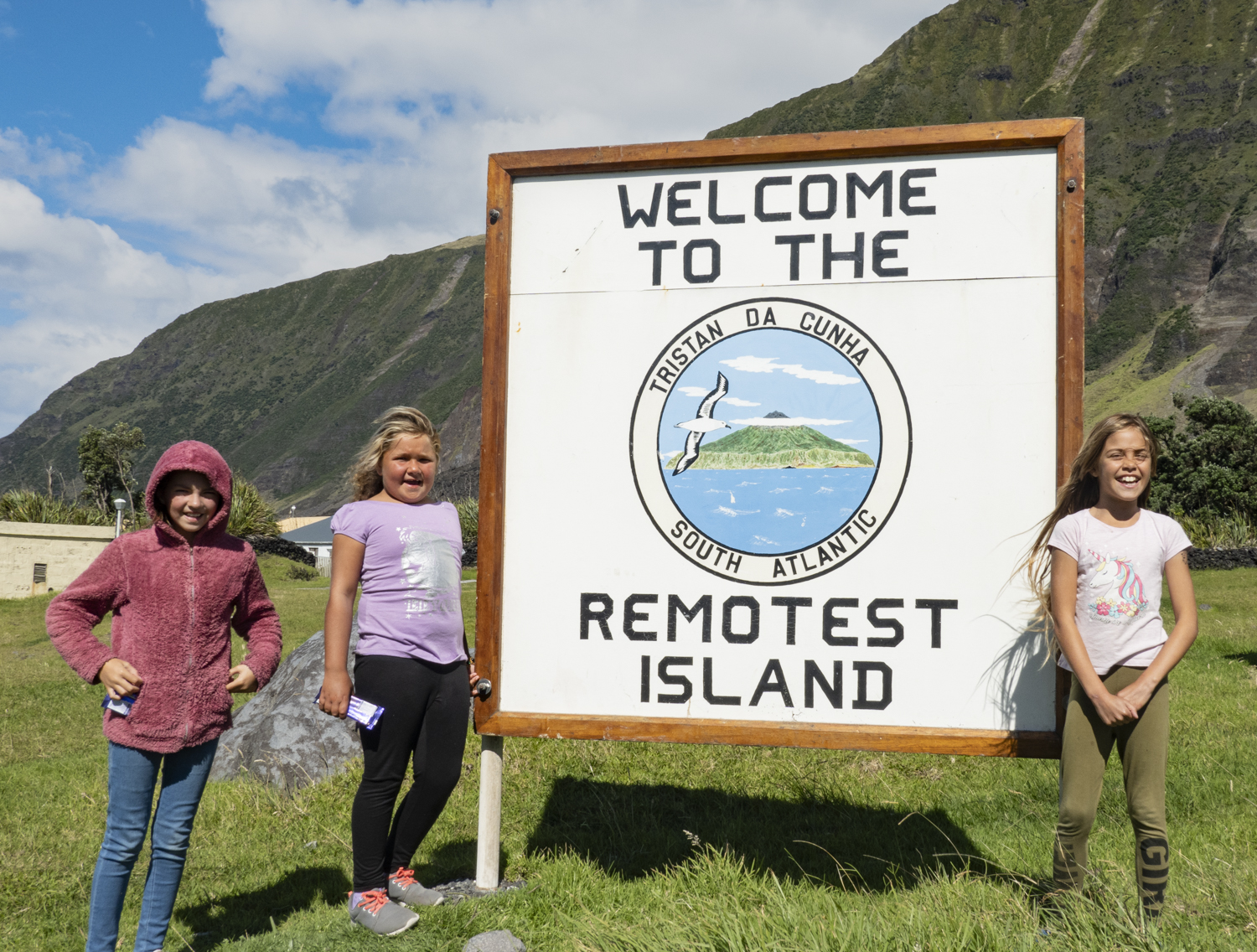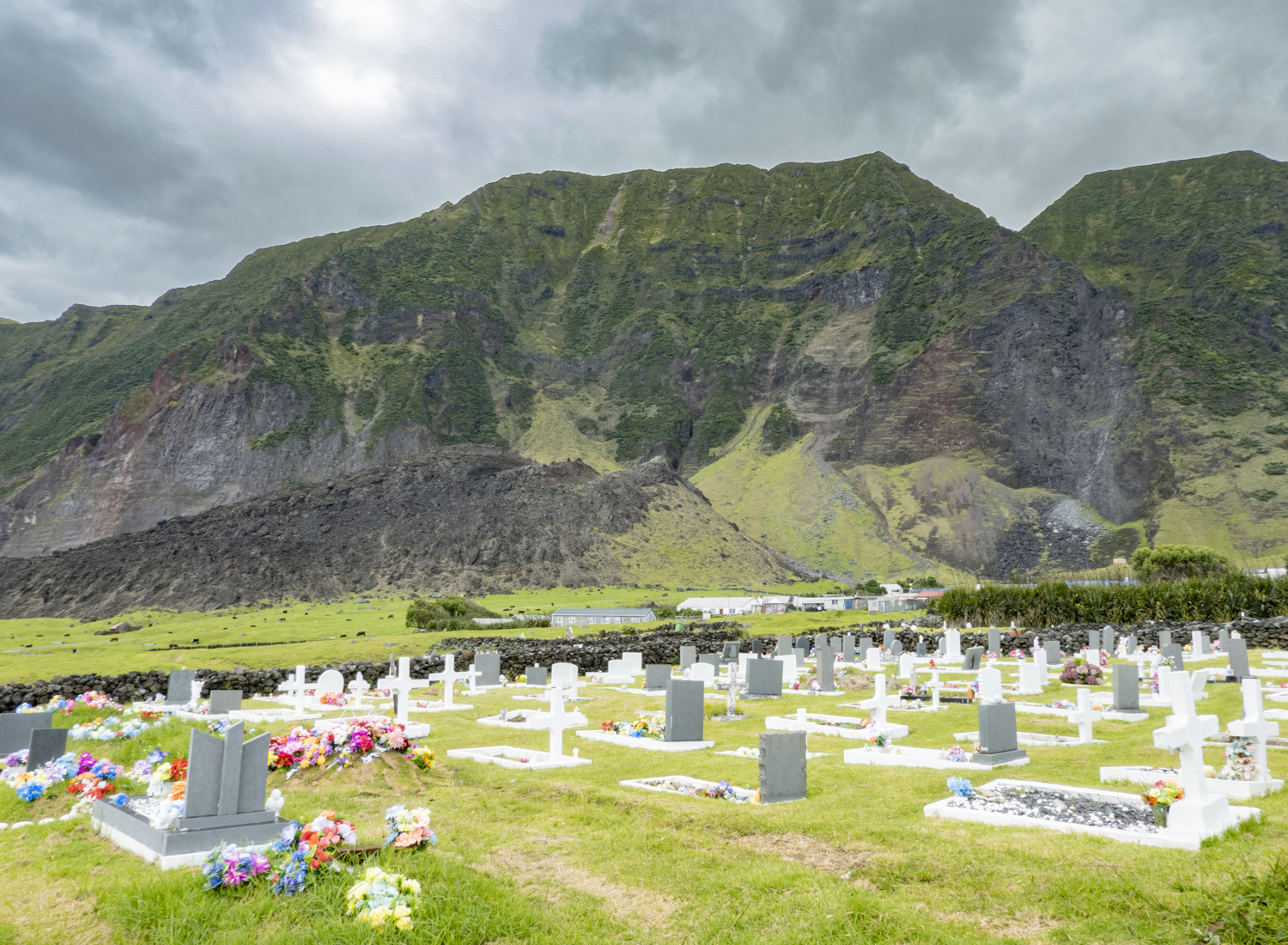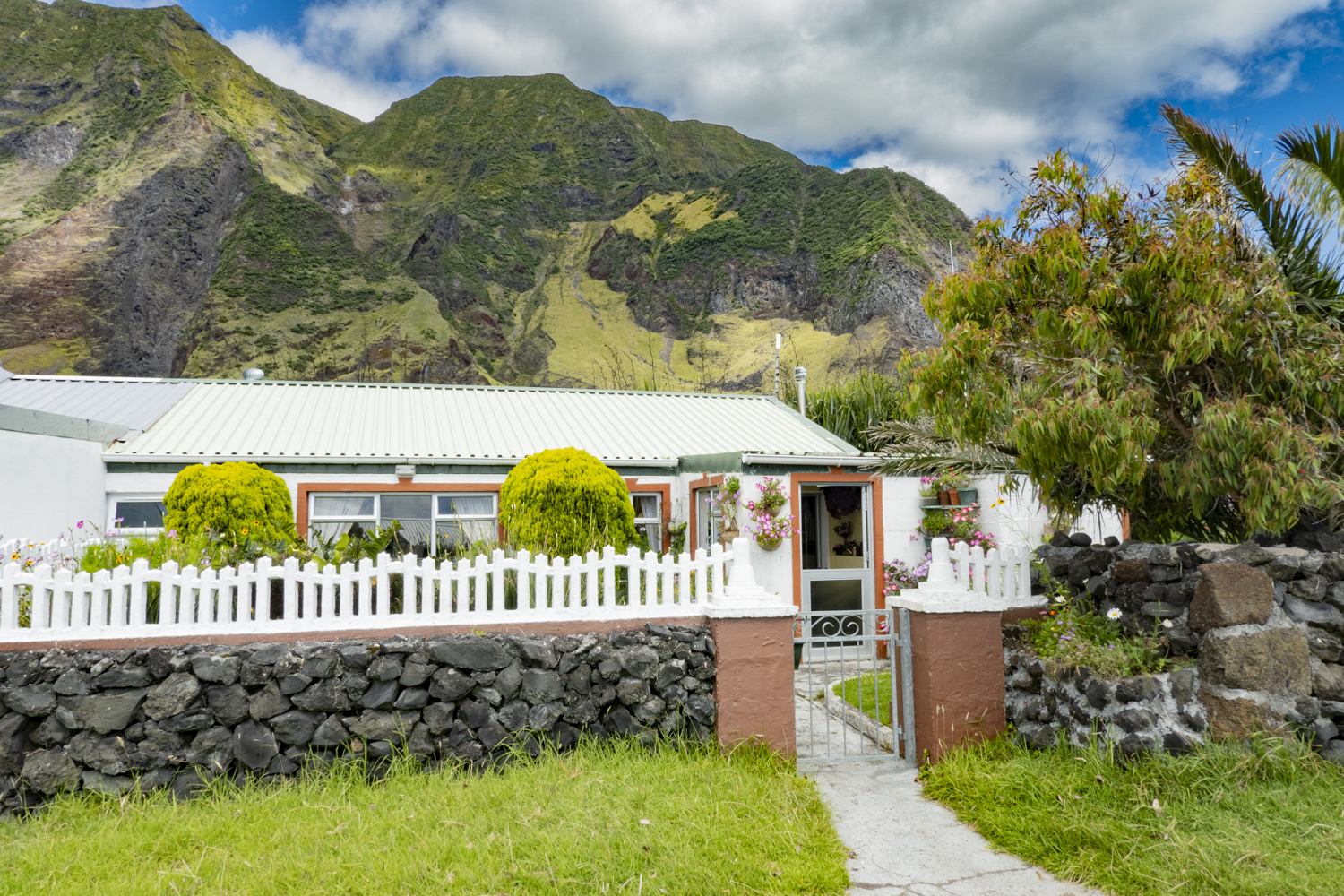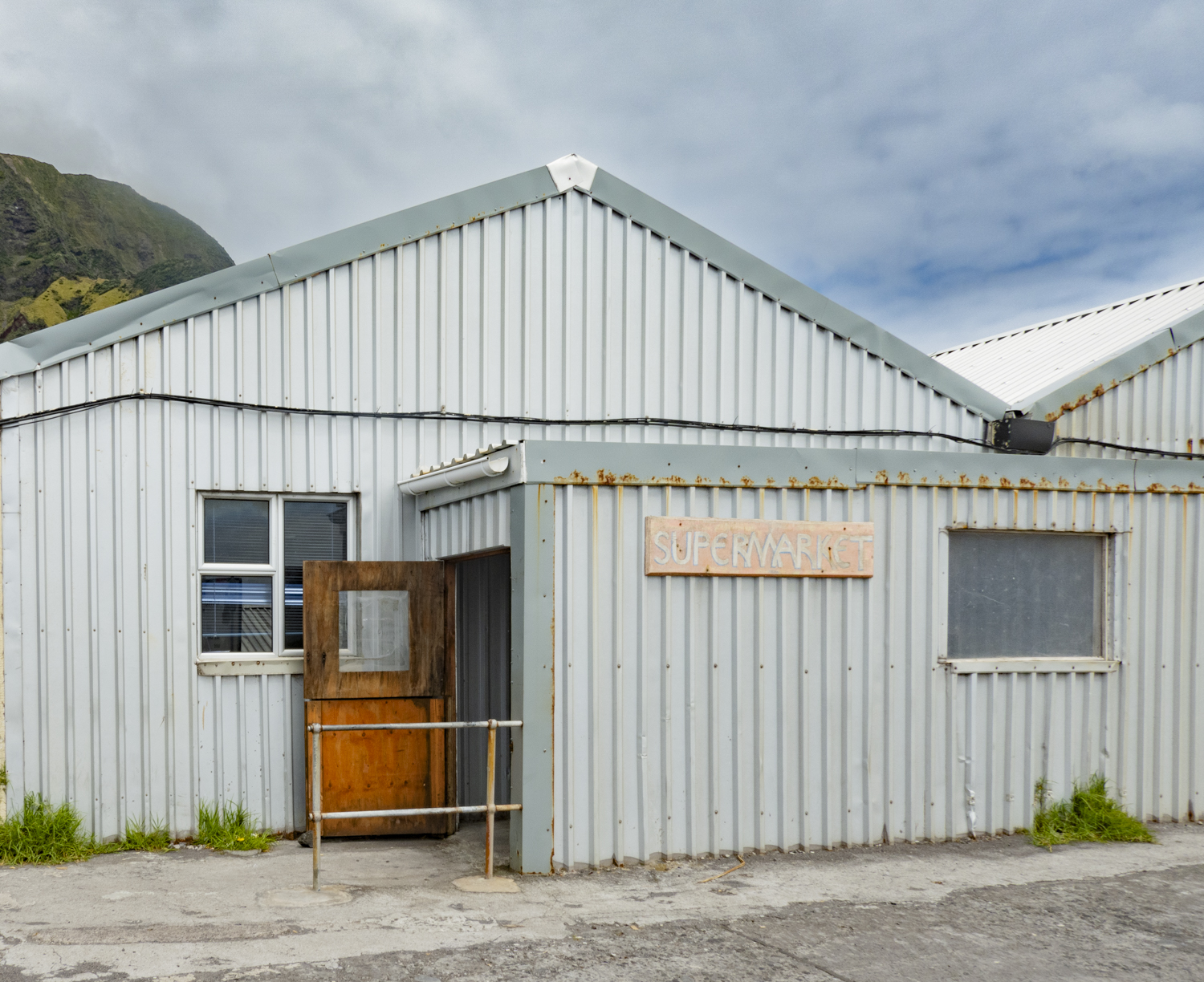
Our Atlantic Ocean crossing from Rio de Janeiro, Brazil to Cape Town, South Africa, was planned for fourteen days, including a stop, nearly midway, at THE WORLD’S MOST REMOTE IMHABITABLE ISLAND, Tristan Da Cunha, British Overseas Territory. How remote is remote, you ask? The volcanic Island (and the 4 islands that make up the eponymous archipelago) is 2,816 kilometers (1,750 miles) from the nearest land in South Africa, to the east, and 3,360 kilometers (2,088 miles) from South America. The only way to visit is by boat – fishing boats from Cape Town, South Africa, and around 10 small expedition cruise ships per year. Note that there is NO airport on the island, so you can’t come and go quickly…
How many people live on the island? The week before we arrived in mid-February, it was 237, and then there was a baby born on the island, so now it is 238. The other three islands that make up the Tristan Da Cunha archipelago are uninhabited – the nearby island of Nightingale Island and the wildlife reserve of Inaccessible Island (both of which we sailed by), and two days further southeast by steamship, the wildlife reserve of Gough Island. Gough and Inaccessible islands together constitute a wildlife reserve, designated a UNESCO World Heritage Site in 1995. Everyone on Tristan Da Cunha lives in the only town, Edinburgh of the Seven Seas, just up from the relatively new Calshot Harbor, which can only handle Zodiacs, tender boats, small fishing boats, and barges (which are used to bring in supplies from the occasional supply ships from Cape Town).
Tristan da Cunha is part of the British Overseas Territory of Saint Helena and Ascension Islands (both of which we have visited on our ship on earlier Atlantic Ocean crossings), along with Tristan Da Cunha. Saint Helena Island is 1,510 miles to the north (2,430 kilometers), and Ascension Island is even further north.

You are probably also asking, why are the islands a British Overseas Territory, and why did England put people on an island so far from the British Isles? Good question. Recall that after Napoleon Bonaparte was defeated (Waterloo, 1815) he was EXILED by the British to Saint Helena Island. Someone in the British military quicky saw that there were two unclaimed islands, about 1,000 miles north and south of Saint Helena Island – islands the French could claim and build up a military presence to then “rescue” Napoleon from Saint Helena Island. Voila, the British decided to take over both islands in 1816 — Ascension Island to the north and Tristan da Cunha to the south – to keep the French out of the South Atlantic Ocean. They administered the British Overseas Territory from Cape Town, South Africa, another area the “Crown” controlled. In 2009, Saint Helena and its two territories received equal status under a new constitution, and the British Overseas Territory was renamed Saint Helena, Ascension, and Tristan Da Cunha, administered now from Saint Helena Island






Each family is allowed to have one cow (for fresh milk) and, each family also has a “potato patch”, about a 2.5-mile walk from the center of town — that each family takes care of. Historically, given the island’s remote location and the infrequency of fresh food supplies arriving, potatoes were historically extremely important to the local diet.


In the previous couple of photographs, you may have noticed a background wall of volcanic rocks. That is a new geologic feature on the island since 1961. “On 10 October 1961, the eruption of a parasitic cone of Queen Mary’s Peak, very close to Edinburgh of the Seven Seas, forced evacuation of all 264 people. The evacuees took to the water in open boats, taken by the local lobster-fishing boats Tristania and Frances Repetto to uninhabited Nightingale Island.
The next day, they were picked up by the diverted Dutch passenger ship Tjisadane that took them to Cape Town. The islanders later arrived in the U.K. aboard the liner M.V. Stirling Castle to a big press reception and, after a short period at Pendell Army Camp in Merstham, Surrey, were settled in an old Royal Air Force camp, near Calshot, Hampshire. The following year, a Royal Society expedition reported that Edinburgh of the Seven Seas had survived. Most families returned in 1963.” – Wikipedia



The world’s remotest Post Office team offers a full philatelic service for collectors, with regular issues of interesting and attractive stamps. Note that Tristan da Cunha did not have stamps until 1952, and the first ones were overprinted St Helena definitives. Essays priced in potatoes were however prepared in the 1940s as part of the petition for stamps. Before then, islanders had to rely on the good will of visiting ships. Tristan stamps have been popular with collectors ever since. Today the island has stamp collectors around the world who buy up new commemorative stamp issues that generate a nice stream of income for the islanders.

The economy of Tristan da Cunha relies on the export of crawfish, also known as Tristan rock lobster, which can be found in hotels as far away as China and Las Vegas. Said to be some of the most delicious lobster on earth according to lobster connoisseurs, this rare variety of crustacean boasts ultra-sweet, pearl white meat that is both delicate and firm in texture. We enjoyed this delicacy as a lobster salad (in a tart and on sandwiches and plain) at the café in the “post office” building, enjoying lunch on picnic tables outside. On the ship, we had procured lots of lobsters and were fortunate to enjoy large, steamed freshly caught lobsters for dinner in one of our restaurants each of the two nights that we were there.



Legal Notices: All photographs copyright © 2024 by Richard C. Edwards. All Rights Reserved Worldwide. Permission to link to this blog post is granted for educational and non-commercial purposes only.

Very interesting…quite an unusual place
LikeLike